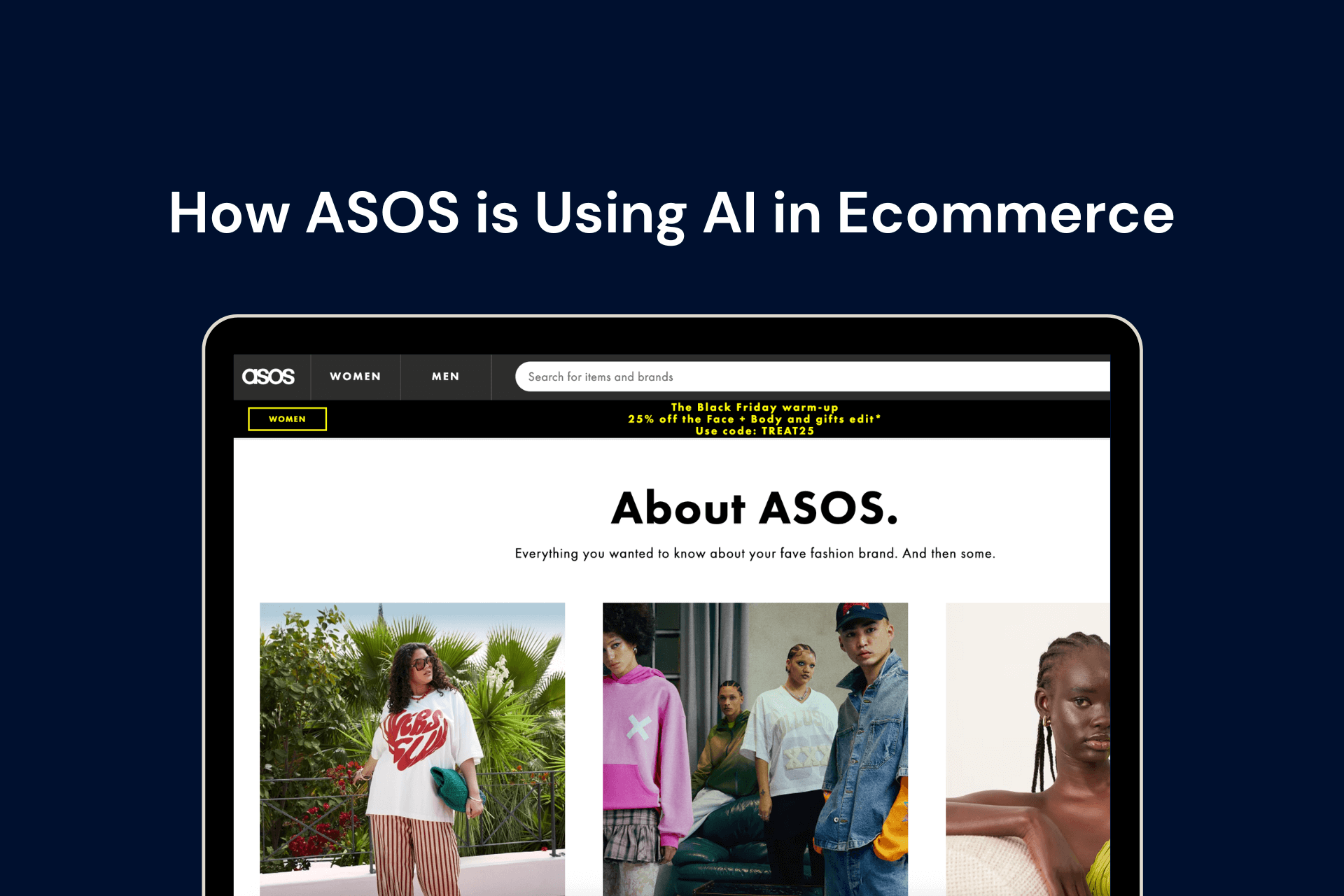In the competitive world of eCommerce, every small action a visitor takes on your Shopify store can lead them closer to making a purchase. These small but meaningful actions, known as microconversions, play a crucial role in influencing buying decisions, improving customer engagement, and ultimately increasing sales.
For health and wellness brands on Shopify, microconversions can be powerful tools to build trust, educate customers, and guide them seamlessly through the buyer's journey. This guide explores what Shopify microconversions are, their importance, and how you can strategically implement them to boost conversions.
What Are Shopify Microconversions?
Microconversions are small actions that indicate a user’s intent to buy, even if they don’t make an immediate purchase. These actions help nurture potential buyers, allowing them to interact with your brand in meaningful ways before making a final decision.
Types of Microconversions
Here are the key types of microconversions you should consider focusing on:
1. Engagement-Based Microconversions
These are interactions that demonstrate interest in your brand and products. While they may not immediately result in a purchase, they increase brand familiarity and trust.
-
Watching a product video: This indicates a higher level of interest in how a product works or its benefits.
-
Clicking on an FAQ section: Customers who actively seek more information are closer to making an informed decision.
-
Reading customer reviews: Social proof helps build confidence and credibility, influencing purchase intent.
2. Lead Generation Microconversions
These involve actions where users provide their contact information, allowing brands to nurture them over time and turn them into paying customers.
-
Signing up for a newsletter: A great way to keep potential customers engaged through educational content and promotions.
-
Downloading a free guide (e.g., "Best Supplements for Gut Health"): Helps educate customers while capturing leads.
-
Creating a wishlist or adding items to favorites: Signals strong purchase intent and allows brands to retarget users later.
3. Purchase-Intent Microconversions
These actions indicate that a customer is seriously considering making a purchase.
-
Adding a product to the cart: A crucial step in the buying journey that brands must optimize to reduce cart abandonment.
-
Using a discount code at checkout: Shows strong purchase intent and the influence of incentives.
-
Checking shipping information: Many customers check shipping costs and delivery times before finalizing a purchase.
Why Are Microconversions Important for Health and Wellness Brands?
The health and wellness industry thrives on trust, education, and customer experience. Unlike impulse purchases, health-related products often require more research and confidence before customers commit to buying. Here’s why microconversions are critical:
1. Build Customer Trust
Microconversions like reading testimonials, engaging with expert content, and watching product demo videos help establish credibility and educate potential customers about your products.
2. Nurture Potential Buyers
Many customers need time to make informed decisions. Offering valuable resources like a "Supplement Finder Quiz" or a personalized skin care guide keeps them engaged until they’re ready to buy.
3. Improve Checkout Conversions
Users who complete microconversions such as adding a product to a wishlist or signing up for price alerts are more likely to complete their purchases later.
4. Reduce Cart Abandonment
Offering small nudges, like reminders for abandoned carts or exclusive discounts for email subscribers, encourages users to return and complete their purchase.
How to Optimize Microconversions for More Sales
Here’s how health and wellness brands can strategically leverage Shopify microconversions to drive more revenue:
1. Optimize Product Pages for Engagement
Your product pages should offer more than just a description. Make them interactive, informative, and trust-building to keep visitors engaged.
-
Include detailed product descriptions with benefits and key ingredients, addressing common customer concerns.
-
Use high-quality images and videos that showcase the product’s real-life applications and expected results.
-
Add customer reviews and testimonials to provide social proof and build confidence in your brand.
-
Offer a "Compare Products" feature to help customers evaluate different options and choose the best fit.
2. Create Interactive Content to Educate Buyers
Since health and wellness purchases are often research-driven, providing interactive and educational content can significantly influence buying decisions.
-
Implement a "Find Your Perfect Supplement" quiz to guide customers to the most suitable products based on their needs.
-
Offer free eBooks or health guides in exchange for an email signup to nurture leads.
-
Host live Q&A sessions or webinars about wellness trends to position your brand as an expert in the field.
3. Improve Email Capture Strategies
Capturing emails is one of the most effective ways to nurture leads and drive future sales.
-
Use exit-intent popups that offer a 10% discount or a freebie in exchange for a newsletter signup.
-
Offer early access to new products or exclusive deals for email subscribers.
-
Implement a loyalty program signup where customers earn rewards for purchases and referrals.
4. Enhance Checkout Microconversions
Reducing friction at checkout can significantly improve conversion rates.
-
Enable one-click checkout options like Shopify Pay, Apple Pay, or Google Pay to speed up the process.
-
Display secure checkout badges to reassure customers about their payment safety.
-
Offer a "Subscribe & Save" option for recurring wellness products like vitamins or protein powders to encourage repeat purchases.
5. Use Retargeting to Re-Engage Visitors
Not every visitor converts on their first visit, so retargeting is crucial.
-
Send personalized email reminders about abandoned carts, offering an incentive to complete the purchase.
-
Use Facebook and Instagram retargeting ads to showcase the exact products customers viewed.
-
Provide limited-time offers on items that customers engaged with but didn’t buy, creating urgency.
Measuring the Success of Microconversions
Tracking microconversions allows you to refine your strategy and optimize your Shopify store for better performance. Here are key metrics to monitor:
|
Microconversion Type |
Metrics to Track |
|
Newsletter Signups |
Email subscription rate |
|
Product Video Engagement |
View time & completion rate |
|
Wishlist & Cart Activity |
Items added vs. items purchased |
|
Abandoned Cart Recovery |
Recovery email open & conversion rates |
|
Search Bar Usage |
Click-through rates from search results |
Using Shopify analytics and tools like Google Analytics, Hotjar, and Klaviyo, you can identify where users drop off and optimize accordingly.
Conclusion
Microconversions are the building blocks of higher sales. By strategically implementing Shopify microconversions, health and wellness brands can improve engagement, nurture trust, and convert more visitors into paying customers.
Start optimizing your Shopify store today by focusing on small but impactful actions that guide users toward making a purchase. Whether it’s through interactive content, better product pages, or retargeting, every microconversion matters.
Contact us to create micro-conversion strategies on your Shopify health and wellness store.
FAQs
1. What are microconversions in Shopify?
Microconversions are small but valuable actions users take on a Shopify store, such as signing up for a newsletter, adding products to a wishlist, or watching a product video. These actions indicate buying intent and help drive conversions.
2. How do microconversions improve sales for health and wellness brands?
Microconversions help build trust, educate customers, and create a smoother path to purchase. By engaging users through product quizzes, reviews, and email signups, brands can increase customer retention and sales.
3. What are the best microconversions to track on a Shopify store?
Key microconversions to track include email signups, product page engagement, add-to-cart actions, checkout initiations, and abandoned cart recovery rates.
4. How can I optimize my Shopify store for microconversions?
You can optimize for microconversions by improving product pages, offering interactive content, using exit-intent popups, and implementing retargeting campaigns.
5. Can microconversions help reduce cart abandonment?
Yes! By engaging users through retargeting ads, email reminders, and offering limited-time discounts, microconversions can help recover lost sales and reduce cart abandonment.




